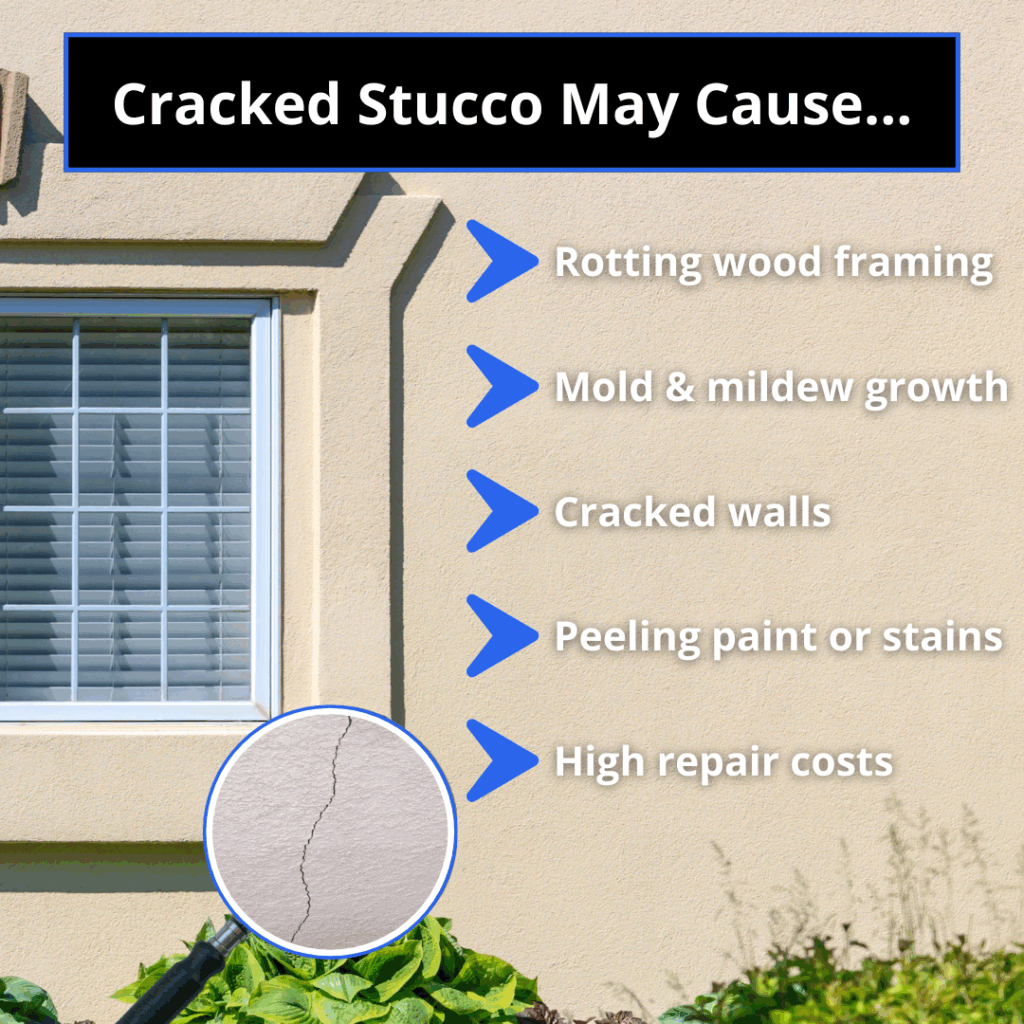Is it a financial or safety risk to buy a stucco house? The short answer is it can be, depending on how the stucco was installed, maintained, and inspected.
Stucco homes can be durable, energy-efficient, and beautiful. However, when poorly installed or neglected, stucco can hide moisture problems that lead to serious damage over time.
Buying a stucco home doesn’t have to feel uncertain. The key is understanding where the risks come from and how to protect yourself as a buyer.
This guide explains how Pennsylvania homeowners can spot issues early, what to look for during inspection, and how to keep a stucco home in great shape for years to come.
What Is Stucco and Why Do Homes Use It?
Stucco is a cement-based coating used on home exteriors. It’s made from cement, sand, lime, and water, applied in several layers over a base material such as wire mesh or foam board.
Once it hardens, stucco forms a solid, protective shell that gives homes a classic look and excellent insulation.
Key Benefits of Stucco:
- Attractive Appearance: Creates a smooth, seamless finish that can be customized with color and texture.
- Durability: Resistant to fire, pests, and moderate weather conditions.
- Energy Efficiency: Helps regulate indoor temperatures, reducing heating and cooling costs.
- Low Maintenance: Requires less frequent upkeep compared to materials like wood siding.
There are two main stucco systems you’ll encounter:
| Stucco Type | Description | Common Use |
| Traditional Stucco | Made from cement, lime, and sand. It’s thick and breathable, allowing moisture to evaporate naturally. | Found on older or custom-built homes. |
| EIFS (Synthetic Stucco) | Uses foam insulation and acrylic finishes for energy efficiency, but needs drainage layers to prevent trapped moisture. | Common in newer homes and remodels. |
The choice between traditional and synthetic stucco isn’t the main issue. The quality of installation and ongoing maintenance determines whether a stucco home remains sound or becomes a hidden liability.
What Are the Main Risk Factors When You Buy a Stucco House?
When asking if it is a risk to buy a stucco house, the honest answer depends on several factors that influence how the stucco system performs over time.
1. Installation Quality
Most stucco issues come down to improper installation. Missing flashing, poor sealing around windows and doors, and a lack of a drainage system allow water to penetrate behind the stucco.
Without an escape route, that moisture can damage the wood structure beneath the surface.
2. Moisture and Climate Conditions
Central Pennsylvania experiences plenty of rainfall, humidity, and freezing temperatures. These conditions can cause moisture to seep into tiny cracks in stucco walls.
When that trapped moisture freezes, it expands and can make the cracks worse over time.
3. Age and Type of Stucco System
Older homes built before modern moisture control methods were standard are more vulnerable to hidden water intrusion. Early synthetic stucco systems, especially from the 1990s, often lacked proper drainage layers.
4. Neglected Maintenance
Even the best stucco systems need regular inspection and care. If small cracks, peeling sealant, or clogged gutters are ignored, the risk of water intrusion increases dramatically.
Example: A 25-year-old home in Harrisburg might have a flawless exterior finish, but hidden water damage behind improperly sealed windows could be rotting the framing beneath.

What Does “Risk” Actually Mean
“Risk” doesn’t mean every stucco home is a bad investment. It means there’s a potential for hidden moisture damage that could lead to costly repairs if not caught early.
When stucco isn’t installed or maintained correctly, water can seep behind the surface and remain trapped. Over time, this may cause:
- Rotting wood framing, weakening the structure of the home.
- Mold and mildew growth, which can lead to poor air quality and health issues.
- Cracked or bulging walls, where trapped moisture expands behind the surface.
- Peeling paint or stains, especially near windows and doors.
- High repair costs, if damage spreads undetected for years.
Average Cost to Repair Stucco Damage
| Problem | Average Repair Cost | Notes |
| Small surface cracks | $300–$800 | Simple to fix if caught early. |
| Localized water intrusion | $2,000–$8,000 | Common near rooflines or window edges. |
| Major remediation | $15,000–$50,000+ | May involve removing and replacing all stucco. |
While these costs may sound intimidating, many homeowners never face them because they stay proactive. Regular inspections and prompt repairs prevent most small problems from turning into large ones.
How to Evaluate the Risk Before Buying a Stucco House
Before you buy a stucco home, take the time to evaluate its condition properly. A few practical steps can make a huge difference in understanding whether you’re walking into a good investment or a potential headache.
1. Hire a Qualified Home Inspector
Choose a home inspector who has specific experience with stucco systems.
Enviroquest offers moisture testing and in-depth evaluations that go beyond surface-level checks. A trained professional can identify warning signs even when the exterior looks perfect.
2. Request a Moisture Test
Moisture testing uses specialized tools to measure water content behind the stucco. This test helps detect hidden issues early, so you can make an informed decision about repairs or price negotiations.
3. Look for Visible Signs of Trouble
Walk around the home and look for:
- Cracks wider than one-eighth of an inch.
- Dark streaks or stains under windows and rooflines.
- Bulging or soft spots that feel spongy.
- Missing or damaged sealant around doors and windows.
4. Review Maintenance Records
Ask the seller for receipts or inspection reports related to past stucco work. Consistent upkeep shows the homeowner took the system seriously.
5. Consider Local Climate and Exposure
Central Pennsylvania’s humid summers and freezing winters make maintenance more critical.
South-facing walls or homes without a large roof overhang tend to show damage first because they take the most weather exposure.
How to Reduce the Risk of Owning a Stucco Home
Owning a stucco home can be low-risk if you follow consistent maintenance habits. Preventive care keeps small cracks from becoming serious moisture problems. Here’s a detailed breakdown of what every homeowner should do:
1. Perform a Visual Inspection Once a Year
Walk around your home and check for cracks, chips, or discoloration. Look closely near windows, doors, and rooflines. Catching small imperfections early can prevent larger issues.
2. Reseal Around Windows and Doors Every 3 to 5 Years
Caulk and sealant eventually dry out and lose flexibility. Reapplying sealant keeps moisture from slipping behind your stucco at its weakest points.
3. Schedule Professional Moisture Testing Every 5 Years
Even if your home looks fine, internal moisture may go unnoticed. Professional testing ensures the system is still performing as it should and helps you avoid long-term damage.
4. Maintain Gutters and Downspouts Seasonally
Clean your gutters regularly to prevent water from overflowing and running down your walls. Direct downspouts at least five feet away from your foundation to keep walls dry.
5. Keep Landscaping Clear of Walls
Trim shrubs and trees so they don’t touch your stucco. Constant contact traps moisture and can lead to staining or surface deterioration.
6. Avoid High-Pressure Washing
While it might seem like an easy cleaning method, power washing can push water into the stucco’s small openings. Instead, use a gentle rinse with mild detergent and low pressure.
7. Address Cracks Promptly
Any visible crack, even a hairline, should be repaired with compatible stucco filler or patch material. Delaying small repairs can allow water to infiltrate during heavy rain or freeze-thaw cycles.
8. Inspect Roof and Flashing During Routine Maintenance
Roof edges and flashing protect your stucco from excessive runoff. Make sure flashing is intact and properly sealed to divert water away from the walls.
By following these simple yet detailed maintenance steps, you can dramatically lower your risk of hidden water damage. Homeowners who stay proactive typically enjoy decades of trouble-free performance from their stucco siding.
Example: A homeowner in Harrisburg noticed small cracks forming under a second-story window. By sealing them immediately and improving drainage, they avoided water intrusion and saved thousands in potential wall repairs.
Local Considerations for Central Pennsylvania
In Central Pennsylvania, stucco performance depends heavily on local weather and building practices. The area’s humid summers, frequent rain, and cold winters create perfect conditions for moisture-related problems if drainage and sealing aren’t done correctly.
Homes built in the 1990s and early 2000s may have outdated EIFS installations that lack proper weep screeds or flashing details. These small omissions can trap moisture behind the walls.
That’s why choosing a local inspection company like Enviroquest is so important. Our inspectors understand the materials, climate, and construction styles unique to the Harrisburg area.
We know where problems tend to occur and how to identify early warning signs that other inspectors might miss.

Related Questions
Can stucco homes be energy-efficient?
Yes. Stucco naturally insulates against heat and cold. When paired with quality windows and wall insulation, it can lower energy costs year-round.
How long does stucco last?
Traditional stucco can last 50 years or longer, while modern synthetic systems can perform well for decades when properly maintained.
Should I avoid stucco homes completely?
No. Many stucco homes are perfectly sound investments. The key is choosing one with proper installation and documented inspection history.
What if I find small cracks after buying?
Small cracks are normal due to settling or temperature changes. Just monitor them regularly and seal them before they expand.
Does stucco affect resale value?
A stucco home in poor condition may sell for less, but a well-maintained stucco home with clean inspection records can command competitive prices.
When to Call a Professional
If you’re unsure about a stucco home’s condition, call a certified home inspector. Professionals can perform:
- Moisture testing to detect water intrusion behind stucco surfaces.
- Infrared scanning to reveal hidden areas of concern.
- Detailed inspection reports to guide repair or negotiation decisions.
Enviroquest specializes in thorough stucco inspections and moisture analysis throughout Central Pennsylvania. Our experts know how to spot subtle signs of damage and help buyers make informed, confident decisions.
Conclusion
So, is it a risk to buy a stucco house? The answer depends on the home’s history and care. When stucco is installed and maintained correctly, it’s not risky at all. In fact, it’s one of the most durable and attractive siding materials available.
The real risk comes from skipping inspections or neglecting small maintenance tasks. With a detailed inspection from Enviroquest and a regular maintenance routine, you can enjoy a stucco home that’s both safe and beautiful for decades.
If you’re buying a home in Central Pennsylvania, schedule your professional inspection with Enviroquest today. Our certified team provides trusted, detailed evaluations that help you protect your investment and buy with confidence.
